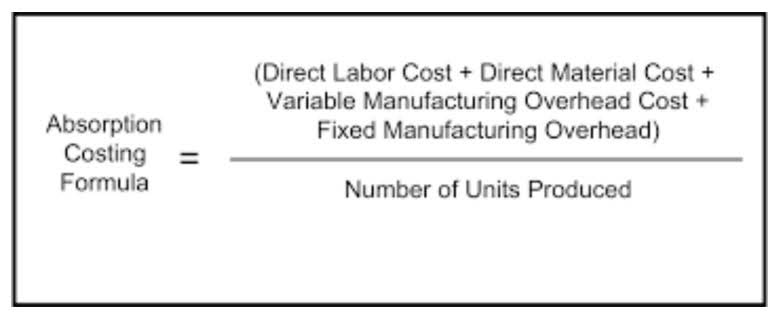
This cost includes expenditures directly attributable to the acquisition of the asset, such as legal fees, transfer taxes, and other transaction costs. As a result, such directly attributable costs are typically included in the cost of an asset in the investor’s financial statements. Any costs incurred prior to the actual acquisition of the asset can be recognised as prepayments and subsequently capitalised as part of the initial carrying amount of the investment at the acquisition date. Under the equity method, the carrying value of the investment is periodically adjusted to reflect the investor’s share of the investee’s earnings or losses.
- For smaller ownership stakes, the investment is reported according to the fair value method.
- If basis differences are not correctly factored into equity method accounting, an investor risks misstating its earnings and balance sheet.
- Let us understand the equity accounting method and its implications in depth with the help of a couple of examples.
- Stay tuned for additional articles further discussing specific and increasingly complex scenarios and examples under equity method accounting.
- If Company B reports a net income of $10 million, Company A would record $3 million as its share of the profits.
Accounting for Loss from Equity Method Investments
For instance, if an investor holds a 30% stake in a company reporting $500,000 in net income for https://www.bookstime.com/articles/paperless-invoicing the year, the investor would recognize $150,000 as their share of earnings in their income statement, increasing the investment’s carrying value. Conversely, if the investee incurs a $100,000 net loss, the investor would record a $30,000 reduction in the investment’s carrying value. If cumulative losses reduce the carrying value to zero, further losses are generally not recognized unless the investor has guaranteed obligations or made additional commitments to support the investee.

Net income from stock investment
However, an investor’s equity method investment balance is presented on a single line item of the balance sheet. These fair values are then compared to the recorded balances in the investee’s balance sheet. Any differences between the assessed fair values and the recorded balances are considered basis differences and must be incorporated into an investor’s equity method accounting. Comprehensive disclosures in the financial statements and accompanying notes are essential for providing transparency and clarity regarding investments accounted for using the equity method.
Impairment Considerations
Proportionate consolidation uses a percentage contributed in the joint venture to generate the financial statements. In other words, it distributes an entity’s assets, liabilities, equities, income, and expenses as per its contribution to the venture. For example, the Equity Method may be more appropriate when the investor has significant influence over the investee and wants to recognize its share of the investee’s profits and losses. On the other hand, the Cost Method may be more appropriate when the investor has no significant influence over the investee and wants to recognize its share of the investee’s profits and losses only when dividends are received. In summary, the equity method is a useful technique for accounting for investments in which an investor has significant influence over the investee’s operations but does not have control.

- Items recorded through OCI may include foreign currency translation adjustments, pension adjustments, or gains/losses on available-for-sale securities.
- If the investor’s amount of adjustment to AOCI exceeds the equity investment value, the excess will be recorded to the income statement as a current period gain.
- Accounting for investments involves recording, analyzing, and reporting investments in financial instruments such as stocks, bonds, and other securities.
- However, it can come up, especially if you’re in an industry or region where joint ventures and partnerships are common, or if you have more work experience.
- For instance, if an investor holds a 30% stake in a company reporting $500,000 in net income for the year, the investor would recognize $150,000 as their share of earnings in their income statement, increasing the investment’s carrying value.
- The Equity Method is an accounting standard that is used to account for investments in companies in which the investor has significant influence, but not control.
The options are to either record the excess distribution as a gain, or to record the excess distribution as a liability. In conclusion, the equity method of accounting is a vital tool for accurately representing investments where significant influence exists but not full control. It provides a comprehensive view of the investor’s economic relationship with the investee, incorporating the investee’s financial results into the investor’s financial statements.
- When an investor acquires an investment that qualifies for the equity method of accounting, the initial cost of the investment includes the purchase price plus any directly attributable costs necessary to acquire the investment.
- However, Company A has already taken 12.0MM to the income statement – its share of net income, taking the dividends as well, would be double counting.
- Dividends received from the investee are treated as a return on investment, not as income.
- Once an equity method investment is recorded, its value is adjusted by the earnings and losses of the investee, along with dividends/distributions from the investee.
- Per ASC 323, the investor measures the initial value of an equity method investment at cost, recording the investment as an asset offset by the consideration exchanged.
- It also allows both companies to function in accordance to their nature or style of working rather than being influenced by an individual outside the organization.
These adjustments ensure that the investment’s carrying amount accurately represents the investor’s interest in the investee’s net assets over time. The primary methods of accounting for investments include the cost method, the fair value method, and the equity method. The choice of method depends on factors such as the level of ownership, the degree of influence over the investee, and the intended duration of the investment. Each method has specific criteria, recognition, measurement, and reporting requirements, impacting the financial statements differently.
Equity Method of Accounting for Investments and Joint Ventures under ASC 323
The investor records their investment after either the common stock or capital investment is acquired and when they have the ability to significantly influence the financial and operating policies of the investee. During the year ended 31 December 20X1, Entity B generated net income of $10m and paid dividends of $7m. In addition, Entity A must account for the $0.25m of additional depreciation charge on the fair value adjustment on real estate when applying the equity method. This is calculated as the fair value adjustment on real estate divided by 15 years of remaining useful life, multiplied by Entity A’s 25% share fixed assets (i.e., $15m/15 years x 25%). The equity method better reflects how an investor company can exert significant influence over an investee’s operations without needing controlling interest. Significant influence can emerge, for instance, when an investor gains board representation and participates in policymaking by conducting substantial inter-company transactions or when the investee becomes technologically dependent.

Equity investments in a separate entity can be held in the form of common stock of a corporation, or a capital investment in partnership, joint venture, or limited liability company. For the equity method of accounting to apply to the investment, the investor must have the ability to influence the operating and financial decisions of the investee. One critique of the equity accounting method is that it does not provide usable insights to investors. For investments accounted for using the equity method, dividends do not contribute to income, as earnings are already recognized proportionally based on ownership percentage. Instead, distributions reduce the carrying amount of the investment, reflecting a return of capital rather than new income.

4.5 Controlling interest to noncontrolling investment—equity method
The exchange of managerial personnel between the investor and the equity method of accounting example investee is another indicator of significant influence. When employees of the investor take up managerial positions within the investee or vice versa, it reflects a level of integration and cooperation that suggests significant influence. This interchange of personnel allows the investor to have a say in the day-to-day operations and strategic decisions of the investee. If the investor has representation on the board of directors of the investee, it is a strong indicator of significant influence.